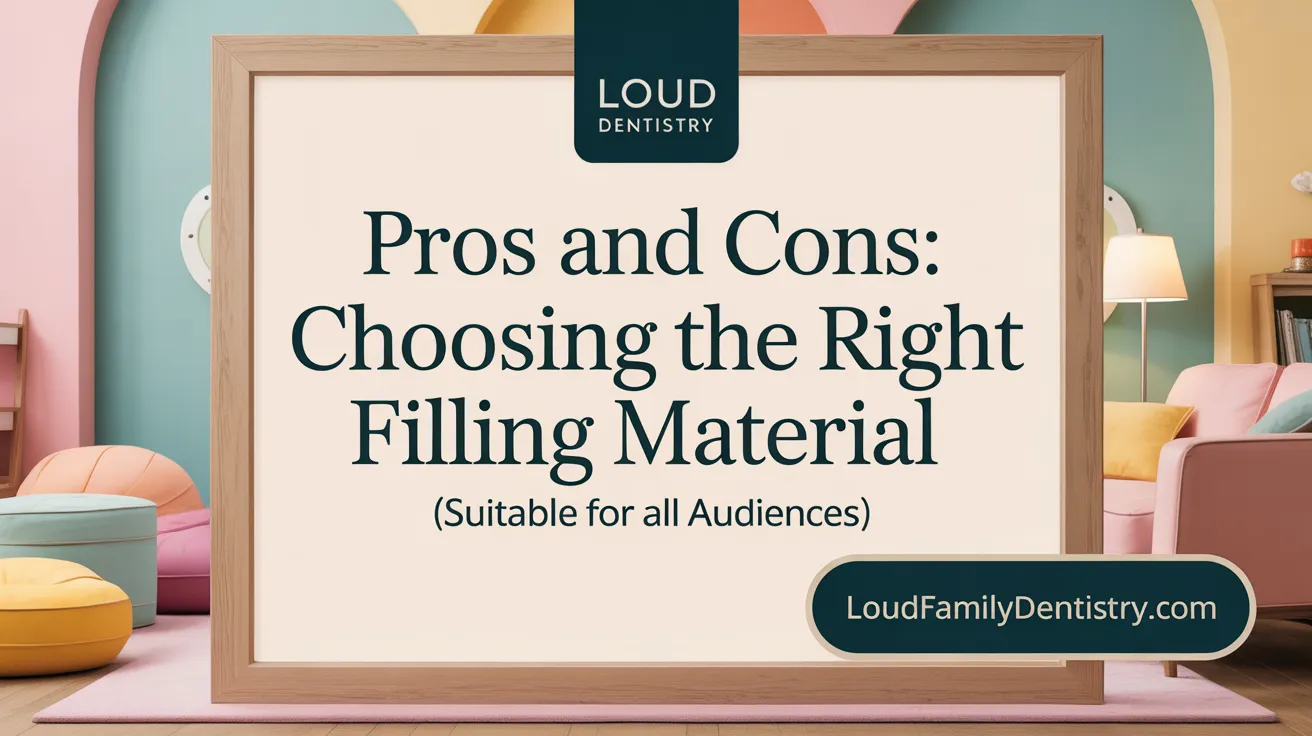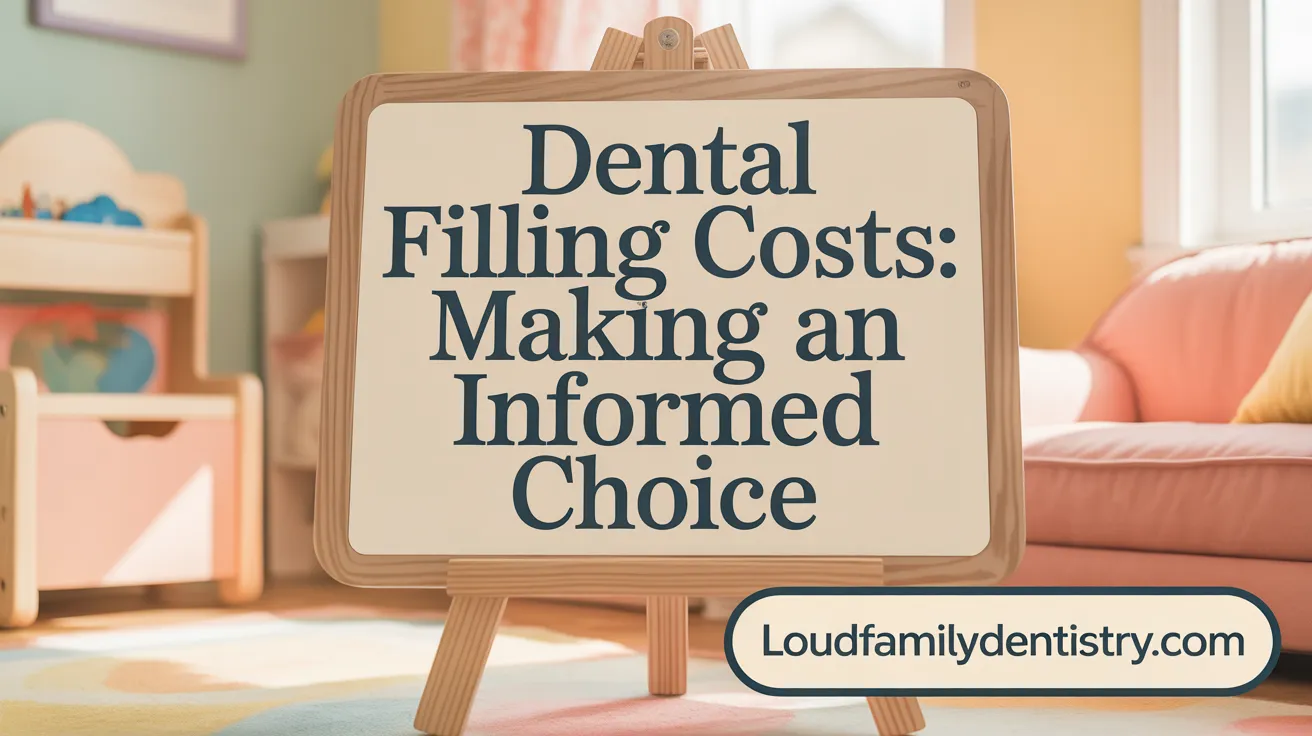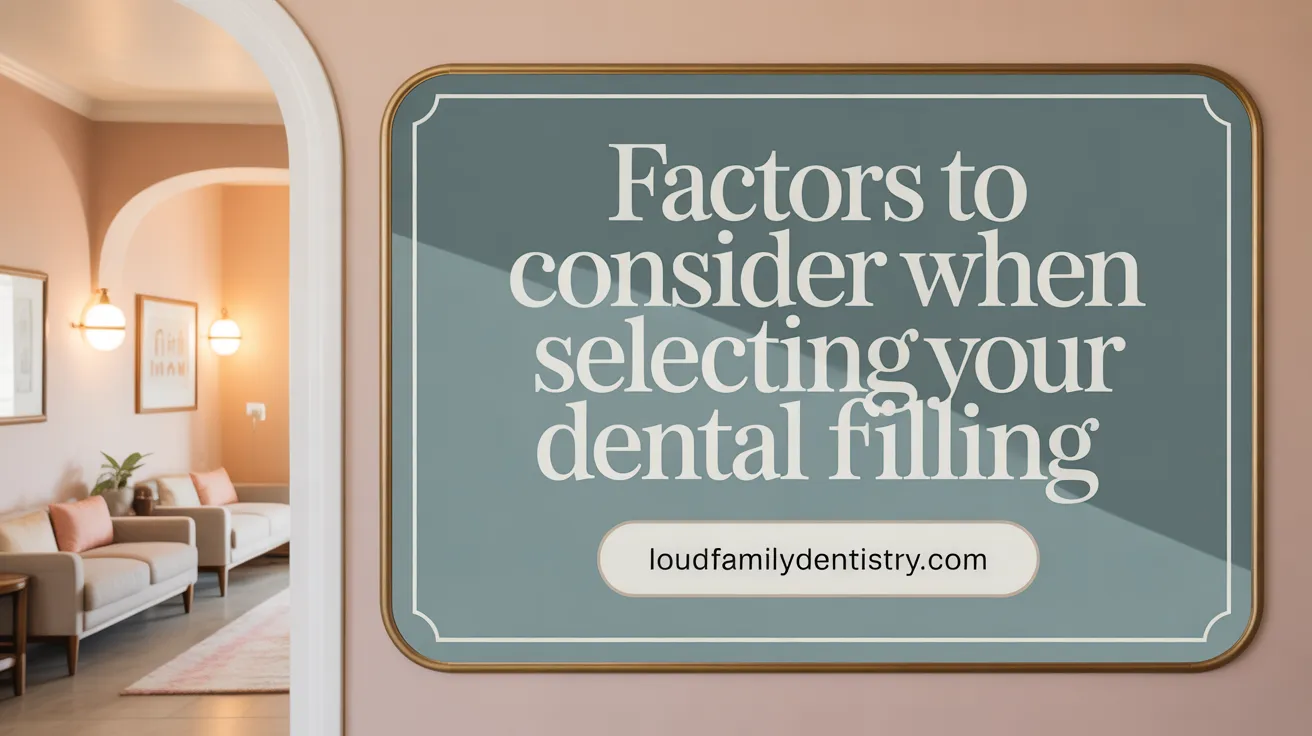Understanding Dental Fillings
Dental fillings are essential restorative materials used to repair teeth damaged by decay or injury. With advances in dental technology, a variety of filling options exist, each offering unique benefits and drawbacks. Selecting the right filling involves considering factors such as durability, appearance, cost, and personal health needs to ensure long-lasting and effective tooth restoration.
Overview of Common Types of Dental Fillings

What are the different types of dental fillings available?
Dental fillings come in various materials and are classified into two main categories: direct and indirect fillings.
Direct fillings are placed directly into the cavity during a single dental visit. They include amalgam (silver), composite resin, and glass ionomer fillings. These are typically used for small to medium cavities and are favored for their quick application.
Indirect fillings require laboratory fabrication and are usually more durable and aesthetic. Examples include gold and porcelain (ceramic) inlays and onlays. They are made outside the mouth and then bonded to the tooth, often needing two visits.
Composition and materials
- Amalgam: Made from a mixture of metals including silver, tin, copper, and mercury. It is known for its strength, longevity (up to 15 years), and cost-effectiveness but has a metallic appearance.
- Composite resin: Composed of plastic and glass particles, allowing it to match the natural color of teeth. It bonds well with tooth structure and is less invasive, lasting around 5-10 years.
- Glass ionomer: Consists of resin mixed with glass, releases fluoride to help prevent further decay, and has a lifespan of about 5 years. It is often used in areas with low biting stress.
- Ceramic (porcelain): Made from porcelain or resin-ceramic, offering excellent aesthetics and resistance to staining. Durability spans up to 10 years.
- Gold: Crafted from gold alloys, extremely durable (up to 30 years), and gentle on surrounding teeth but more costly.
Typical uses and applications
| Type of Filling | Material Composition | Durability | Aesthetic Appeal | Typical Uses | Cost Estimate |
|---|---|---|---|---|---|
| Amalgam | Metal mixture including mercury | Up to 15 years | Metallic color | Back teeth, heavy biting forces | $50–$200 |
| Composite | Plastic and glass particles | 5–10 years | Tooth-colored, blends with natural teeth | Small to medium visible cavities | $90–$250 |
| Glass Ionomer | Resin + glass, fluoride releasing | About 5 years | Tooth-colored, less durable | Child's teeth, low stress areas | $100–$150 |
| Ceramic | Porcelain or resin-ceramic | Up to 10 years | Natural tooth appearance | Larger restorations, aesthetics focused | $700–$1,200 |
| Gold | Gold alloy | Over 20 years | Metallic, durable | Back teeth, where longevity is essential | $800–$1,200 |
Choosing the best type depends on factors like the cavity's location, patient's aesthetic preferences, budget, and overall dental health. Regular dental checkups are recommended to ensure the longevity and functionality of the fillings.
Pros and Cons of Popular Filling Materials

What are the advantages and disadvantages of common dental filling materials?
Different dental filling options come with their own sets of benefits and drawbacks, making it important to choose the right material based on the specific clinical situation and patient preferences.
Amalgam fillings are known for their strength, durability, and cost-effectiveness. They can last upwards of 10 to 15 years and withstand heavy biting forces, which makes them suitable for back molars. However, their metallic appearance is less appealing aesthetically, and the presence of mercury has raised health concerns, although regulatory bodies like the ADA and FDA support their safety for most individuals.
Composite resin fillings offer excellent aesthetic qualities, as they can be matched to the color of natural teeth, making them nearly invisible. They bond directly to the tooth, often requiring less removal of healthy dental tissue. These properties make them ideal for front teeth or visible areas. The major downsides are their shorter lifespan, typically 5-7 years, compared to amalgam, and their tendency to chip or stain over time. They are also more expensive, often costing more than amalgam, and placement takes longer due to layering and curing.
Gold fillings are incredibly durable, with a lifespan of up to 20 years or more. They are biocompatible and resistant to corrosion, which enhances their long-term stability. The primary disadvantages are their high cost and the visible gold color, which some patients may find less attractive.
Ceramic or porcelain fillings closely mimic natural tooth color, making them highly aesthetic. They are resistant to staining and relatively durable but tend to be more brittle than other materials and require more extensive tooth preparation. Their higher cost also limits their widespread use.
Glass ionomer fillings are particularly useful in situations requiring fluoride release, such as cavities in children or areas prone to decay. They bond well to tooth structures and are easy to place. However, they are less durable and wear out faster than other materials, making them suitable mainly for small cavities or non-load-bearing areas.
| Material | Advantages | Disadvantages | Typical Lifespan | Cost Range |
|---|---|---|---|---|
| Amalgam | Highly durable, inexpensive, resistant to wear | Metallic appearance, contains mercury, less aesthetic | 10-15 years | $50-$200 per filling |
| Composite resin | Tooth-colored, bonds well, preserves tooth structure | Less durable, may stain, higher cost | 5-7 years | $90-$250 per filling |
| Gold | Long-lasting, biocompatible, resistant to corrosion | Expensive, visible, requires multiple visits | 20+ years | $400-$800 per filling |
| Ceramic | Natural appearance, stain-resistant | Brittle, expensive, longer placement time | 7-10 years | $1000+ per filling |
| Glass ionomer | Fluoride-releasing, good for small or root cavities | Less durable, prone to wear | 5 years or less | $150-$300 |
Choosing the best filling method depends on factors like the location of the cavity, aesthetic needs, budget, and potential allergies. Regular dental checkups help ensure longevity regardless of the material used.
Cost Comparison and Financial Considerations
 Different types of dental fillings come with a wide range of costs, influenced mainly by the materials used and the complexity of the procedure.
Different types of dental fillings come with a wide range of costs, influenced mainly by the materials used and the complexity of the procedure.
Amalgam fillings are the most budget-friendly option, costing on average around $160 per tooth, with prices ranging from as low as $50 to approximately $350. They have been in use for over a century, making them a reliable and economical choice for many patients.
Composite resin fillings, which are tooth-colored and blend seamlessly with natural teeth, are slightly more expensive. The average cost is about $191, with typical prices spanning from $90 to $250. Their aesthetic appeal makes them popular, especially for visible areas.
Gold fillings tend to be on the higher end of the price spectrum, averaging around $400. The cost can vary widely, from approximately $250 up to $4,500. Despite the higher price, they are prized for their durability, longevity, and biocompatibility.
Porcelain or ceramic fillings are notably the most expensive, with a mean cost of about $1,150. They can range from $500 to over $2,800 or more, primarily due to their superior aesthetics, resistance to staining, and strength.
Choosing the right filling involves balancing initial costs with long-term benefits. While amalgam options are less costly upfront, materials like gold and porcelain may offer greater durability and better aesthetic results, potentially reducing the need for future restoration.
Economic factors such as insurance coverage, personal budget, and the specific clinical needs of the tooth also play roles in decision-making. Patients should consider both the initial expense and the expected lifespan when selecting a filling material.
| Filling Material | Average Cost | Typical Range | Notable Benefits |
|---|---|---|---|
| Amalgam | $160 | $50 - $350 | Cost-effective, durable, long-lasting |
| Composite Resin | $191 | $90 - $250 | Aesthetic, bonds well, minimally invasive |
| Gold | $400 | $250 - $4,500 | Highly durable, biocompatible |
| Porcelain (Ceramic) | $1,150 | $500 - $2,800+ | Natural look, stain-resistant |
Understanding these costs can help patients and dentists make informed choices based on budget, durability, and aesthetic preferences, ensuring the best long-term outcomes for dental health.
Factors Influencing Filling Material Selection

What factors influence the selection of a suitable dental filling material?
Choosing the right material for a dental filling depends on several important considerations. Dentists evaluate the cavity's location and size, as these impact which material will best withstand chewing forces and match aesthetic needs.
Aesthetic preferences are crucial, especially for teeth visible when smiling or talking. Materials like composite resin and porcelain are often chosen for their natural appearance, blending seamlessly with surrounding teeth.
Durability and strength are vital, particularly for molars and other back teeth subjected to heavy biting pressure. In such cases, amalgam and gold have been favored for their long-lasting qualities. Gold, for instance, can last over 20 years, offering exceptional durability.
Cost and patient budget also influence selection. While amalgam and glass ionomer fillings tend to be more affordable, ceramic and gold options are generally more expensive but offer superior aesthetics or longevity.
Patient-specific factors, such as allergies to certain metals or sensitivities, are also considered. Some individuals may need to avoid certain materials, like amalgam containing mercury. For children or less stressed areas, glass ionomer fillings that release fluoride can help prevent future decay.
In addition, the dentist assesses the individual’s oral health and the potential for wear or fracture. Materials that are resistant to staining, shrinking, or chipping are preferred in specific cases.
To summarize, the ideal filling material balances functional performance, aesthetic appeal, cost-effectiveness, and individual health considerations. The chosen material aims to restore the tooth’s function and appearance while providing long-term durability and comfort for the patient.
Longevity, Maintenance, and Care of Dental Fillings
Dental fillings vary widely in how long they last and how they should be maintained. Gold fillings are among the most durable, often exceeding 20 years with proper care. Ceramic or porcelain fillings can last about 10 to 15 years, thanks to their resistance to staining and chipping. Amalgam fillings also typically last around 10 to 15 years, offering strength at a lower cost. On the other hand, composite resin fillings tend to last about 5 to 10 years, though they are more aesthetically pleasing because they match the natural tooth color.
The lifespan of a filling depends on several factors. Good oral hygiene habits, such as regular brushing and flossing, help prevent further decay around the filling. Avoiding hard, sticky, or chewy foods can reduce stress on the filling and minimize the risk of cracks or dislodgement.
Regular dental check-ups are essential—dentists monitor the condition of your fillings during routine visits. They can identify early signs of wear, such as cracks, discoloration, or looseness, before they cause further problems.
Signs that a filling may need professional attention include increased tooth sensitivity, pain, changes in bite feel, or visible cracks and chips. If you notice any of these, it's important to see your dentist promptly to prevent more extensive damage.
In summary, maintaining good oral health and scheduling regular dental visits are vital for prolonging the life of your fillings. Proper care not only extends their lifespan but also helps keep your teeth healthy and functional for years to come.
Making an Informed Choice on Dental Fillings
Choosing the right dental filling material involves evaluating multiple factors including durability, aesthetics, cost, and personal health considerations. Amalgam remains a strong, economical choice for back teeth, while composite resins and ceramics offer superior aesthetic appeal for visible areas. Gold and porcelain inlays, despite their higher cost, provide exceptional longevity and biocompatibility. Regular maintenance, good oral hygiene, and timely dental checkups are essential to maximize the lifespan and effectiveness of any filling. Ultimately, working closely with a dental professional ensures a tailored approach that balances function, appearance, and budget for optimal oral health.
References
- 7 Types of Dental Fillings: Pros, Cons and Costs
- Dental Fillings: Types, Materials & What They're For
- The Pros and Cons of Different Types of Dental Fillings
- Pros and Cons of Dental Fillings
- The Different Types of Dental Fillings and Their Benefits
- Dental Fillings: Types, Pros, Cons, Care, and Considerations
- The Pros and Cons of Different Dental Fillings
- Types of Dental Fillings & Their Benefits
- Understanding Different Dental Fillings
